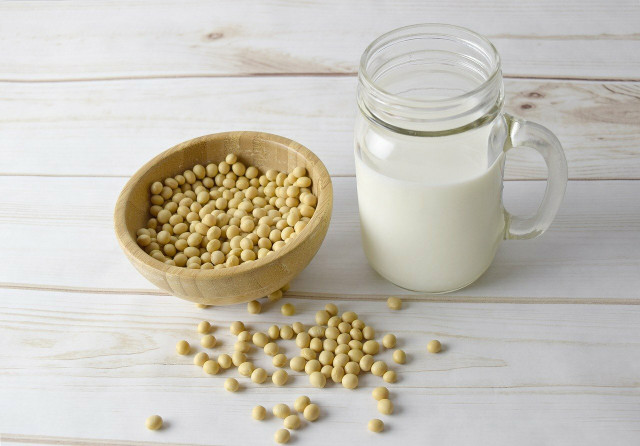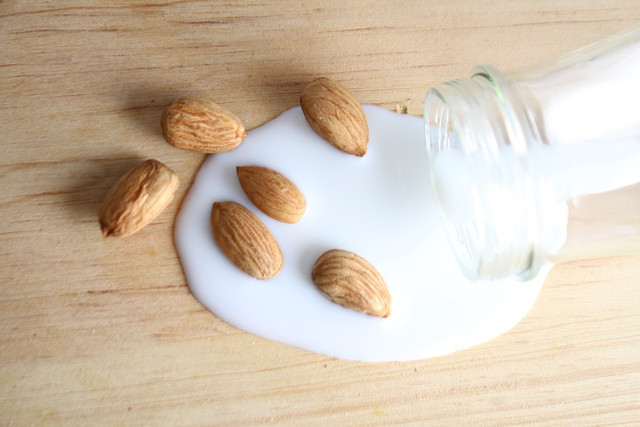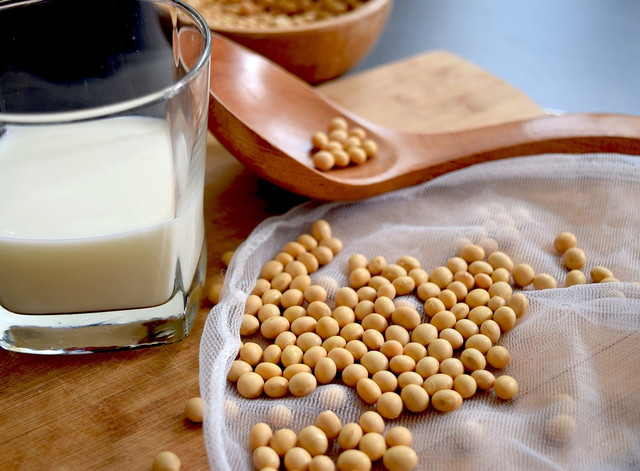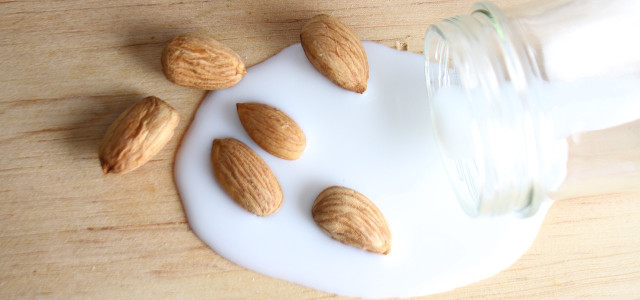Soy milk and almond milk are two popular options for plant-based milk alternatives. Both have their own nutritional and environmental strengths and weaknesses.
By now, you’ve probably heard about the negative environmental effects associated with traditional dairy products. Dairy production is associated with large amounts of greenhouse gas emissions, decreased soil quality, and significant water usage, among others. In fact, dairy is so environmentally costly that it emits about three times as much greenhouse gas than any plant-based milk. That being said, each plant-based milk has its own effects on the environment, as well as your health. Soy milk and oat milk are two options with unique nutritional profiles and growth needs — but which is better for you, and which is better for the planet?
Soy Milk for Your Health

(Foto: CC0 / Pixabay / bigfatcat)
Both soy milk and almond milk are considered healthy when incorporated into a balanced diet, but they each have their own strengths and weaknesses.
100mL of fortified soy milk contains:
- 26 Calories
- 2.4g Protein
- 1.65 Fat
- 0.5g Carbohydrates
- 0.5g Fiber
- 120mg Calcium
- 0.4mcg Vitamin B12
- 0.8mcg Vitamin D
In addition to being a good plant-based source of calcium, soy milk is also rare because it provides a vegan source of complete protein. What this means is that it contains all nine of the essential amino acids, the building blocks of proteins that your body can’t produce on its own and needs to get from your diet. Soy milk is, in fact, widely considered the plant milk that is most nutritionally similar to dairy. However, it doesn’t contain as much saturated fat, making it better for heart health. Soybeans are also a source of antioxidants, which can reduce the harmful effects of oxidative stress, including aging and several chronic diseases.
Soy milk might sound great so far, but it does have some drawbacks. To begin with, its main ingredient is soy, one of the FDA’s eight major food allergens, which makes it unsuitable for anyone with a soy intolerance. Additionally, many people have raised concerns over the phytoestrogens found in soy. These are compounds that resemble estrogen, and which are sometimes classed as endocrine disruptors, or compounds that can adversely affect hormonal regulation. However, as long as your diet is not overly reliant on soy and you consume other sources of protein, you will not experience the negative effects of soy. In fact, a healthy amount of soy in one’s diet may actually help menopausal women regulate the effects of their changing hormonal profile. You may also want to avoid large amounts of soy milk if you are prone to oxalate kidney stones, since it contains oxalate.
Almond Milk for Your Health



(Foto: CC0 / Pixabay / jennyleenaguirre)
In 100mL of almond milk, you will find:
- 13 Calories
- 4g Protein
- 1g Fat
- 1g Carbohydrates
- 4g Fiber
- 120mg Calcium
- 4mcg Vitamin B12
- 75mcg Vitamin D
Like soy milk, almond milk is a great source of calcium for those following a plant-based diet. It also contains more protein and fewer calories than soy milk, so it makes a great choice for anyone wanting to bulk up. Additionally, almonds are naturally high in vitamin E, which also acts as an antioxidant.
Unfortunately, almond milk also has its own set of drawbacks as well. Almonds are also considered one of the eight major food allergens, since it is a tree nut, and so it is unsuitable for many individuals with allergies. Additionally, because of its low-calorie content and lack of a complete protein profile, it can have adverse effects on development if it becomes the predominant source of milk for children.
Soy Milk for the Planet



(Foto: CC0 / Pixabay / rosinakaiser)
Dairy production has much more adverse effects on the environment than any kind of plant milk. However, it is still important to consider the advantages and disadvantages of the many alternatives out there.
Although soy does not require a great number of resources, its industry is unfortunately associated with a great deal of environmental destruction. Much of the land that soy is grown on nowadays was previously part of the Amazon rainforest, which was cut down over the past several decades in order to create profitable farmland. However, there is a relatively easy way to avoid contributing to companies that support deforestation: reading labels. By checking labels to ensure that the soybeans in your soy milk were grown in the U.S., Canada, or even China, you can ensure that you are not buying an unethical product. When it is sourced in this way, soy milk is a very sustainable vegan milk alternative.
Almond Milk for the Planet



(Foto: CC0 / Pixabay / PollyDot)
While almond milk is not associated with deforestation, it has its own set of ecological issues. Most notably, many almonds are grown in arid regions of the U.S. which cannot support these crops without massive irrigation systems. The massive amount of water required to produce just a few almonds comes at a tremendous environmental cost.
In recent years, many environmentalists have also begun to draw attention to the negative impact of almond production on bees. Almonds require bees for pollination, but unfortunately, the massive scale of commercial almond production affects the creatures negatively. According to an article in the Guardian, almond milk production exposes bees to damaging pesticides, disrupts their natural seasonal cycles, and creates environments where it is easy for bees to transmit diseases to one another. This leads to wide-scale harm, including the death of 30% of a previously healthy hive. If you want to avoid this ethical concern, look for small and organic almond farms.
Soy Milk vs. Almond Milk: Conclusion



(Foto: CC0 / Pixabay / bigfatcat)
Overall, it looks like soy milk is better than almond milk, both for you and for the planet. However, if you have a soy allergy, or if you can’t find a sustainable brand of soy milk, almond milk is still a plant-based option for you. At the end of the day, both products have a significantly reduced environmental effect compared to traditional dairy, and so by choosing any kind of plant milk at all, you are positively contributing to our planet’s future.
Read more:
** Links to retailers marked with ** or underlined orange are partially partner links: If you buy here, you actively support Utopia.org, because we will receive a small part of the sales proceeds. More info.Do you like this post?










